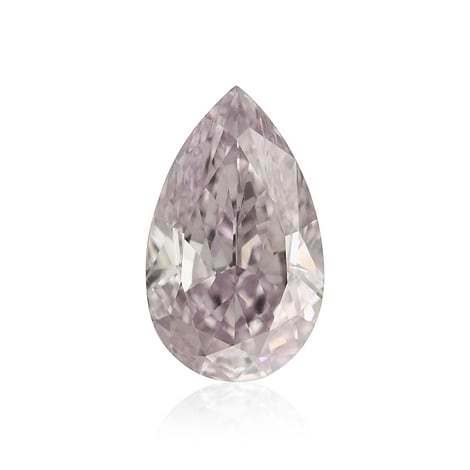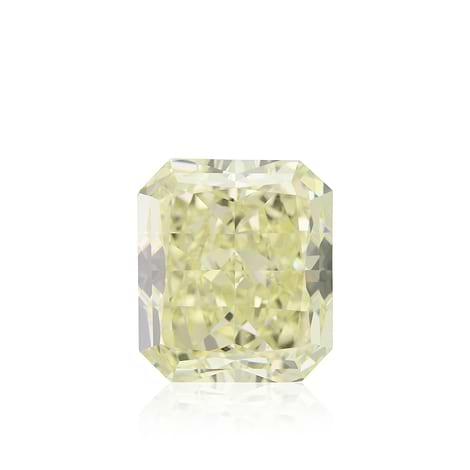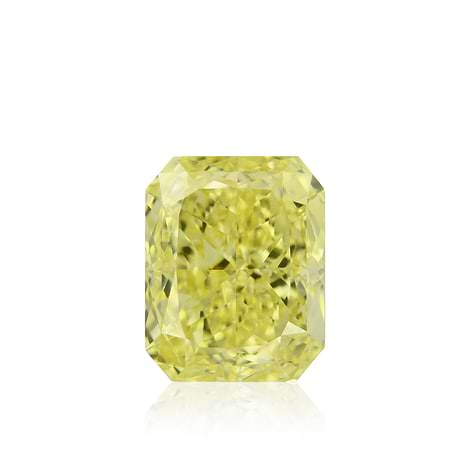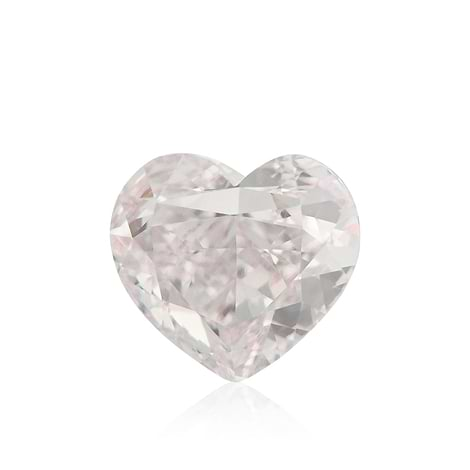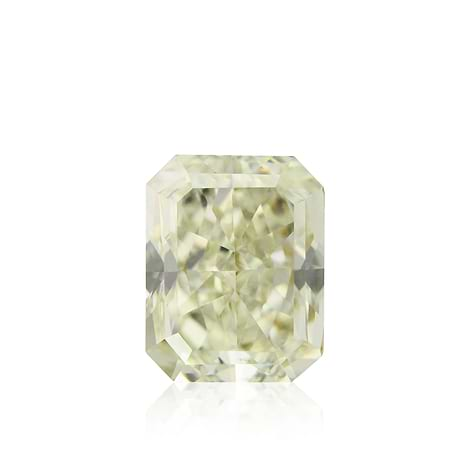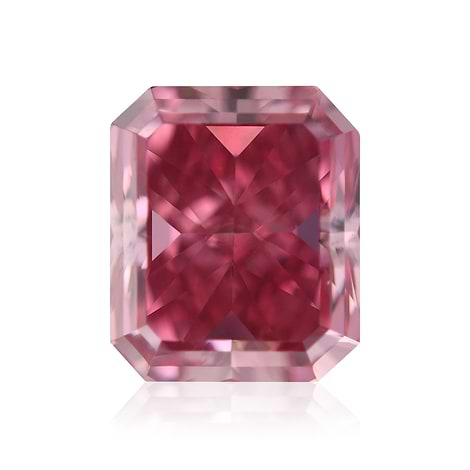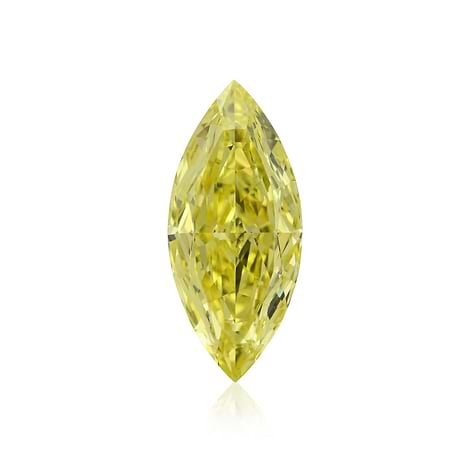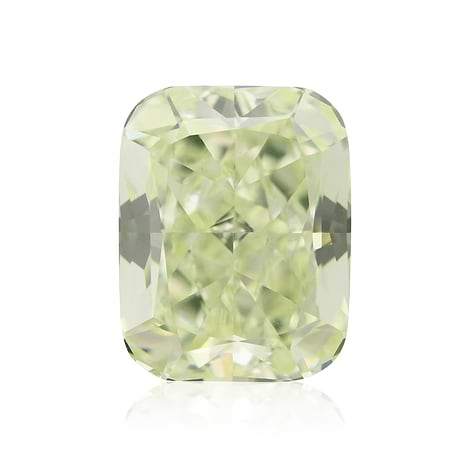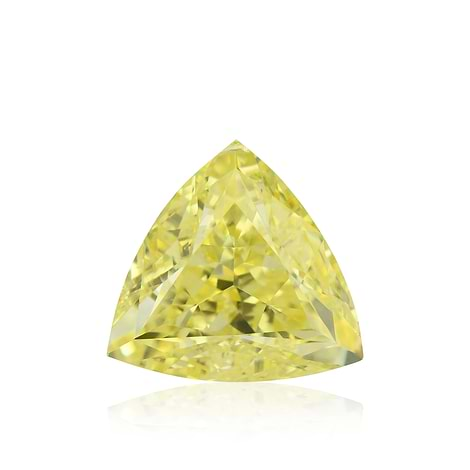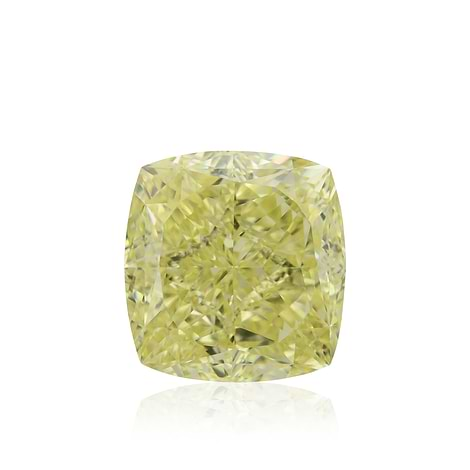A shimmering brilliant diamond is what most people imagine when thinking about a girl’s best friend. However, not every colorless diamond will provide that level of brilliance. A number of factors contribute to the ultimate shine, but one of the most significant factors is the number of facets, and how well they are made. The cut of the diamond will make the biggest contribution to the shine, but it almost always will be significantly better with a round shaped stone. The round brilliant diamond has 57 or 58 facets, which is what makes its brilliance so great, hence its name. The fire and brilliance of the round diamond caused by the light reflecting in and out so quickly through the many facets of the stone is unlike any other shape, which is what makes it so popular. Round diamonds are less common among color diamonds because its shape does not have the same effect on a color diamond as it does on a colorless one. In fact, it is more difficult to contain a color diamond’s color in a round shape than other shapes. Let us take a look at the round diamond and its many facets that make it so irresistibly gorgeous.round diamond caused by the light reflecting in and out so quickly through the many facets of the stone is unlike any other shape, which is what makes it so popular. Round diamonds are less common among color diamonds because its shape does not have the same effect on a color diamond as it does on a colorless one. In fact, it is more difficult to contain a color diamond’s color in a round shape than other shapes. Let us take a look at the round diamond and its many facets that make it so irresistibly gorgeous.
Browse through our round shaped fancy colored diamonds.

a Leibish fancy red round shaped diamond
History of a Round Diamond
Round diamonds have been around for quite some time. However, they have gone through quite a few changes throughout the years. In 1919, Marcel Tolkowsky created a way to cut diamonds so that they display an incredible amount of brilliance. He used the round shape to do so, and included many triangular and kite-shaped facets that spread outward from the center of the diamond. Prior to this discovery, round diamonds existed but with much less brilliance. The Old European Cut is the most noteworthy round cut used mainly in the late 1800s but is still found today. Such diamonds had much smaller tables, a crown angle greater or equal to 40 degrees, a lower half facet length less than or equal to 60%, and a slightly large culet size. Older diamonds like this particular cut did not have a grading system whereas all modern round cuts do. That is why it is crucial to differentiate between an Old European Cut and a poorly cut round brilliant because the latter must be given a poor cut grade while the former will simply be graded based on color, carat, and clarity.
A good example of this cut is a diamond ring that was purchased at a flea market for only $13 dollars, but once it was discovered to be real it was sold earlier this month at auction for $848,000 at the Sotheby’s Fine Jewels auction in London!

A round brilliant white diamond and a yellow radiant shaped stone
Evolution of the Round Brilliant
While Tolkowsky is responsible for establishing the brilliant cut, it did not stop evolving in the early 20th century. The round brilliants that we know and love today have evolved greatly over the decades. Most round brilliants have 58 facets that are either a bezel facet (kite-shaped) a star facet (triangular) or an upper half facet (another triangular shape.) Some modern round brilliants will only have 57 facets because they do bot have a culet. These diamonds will have a small pointed area at the bottom of the stone.
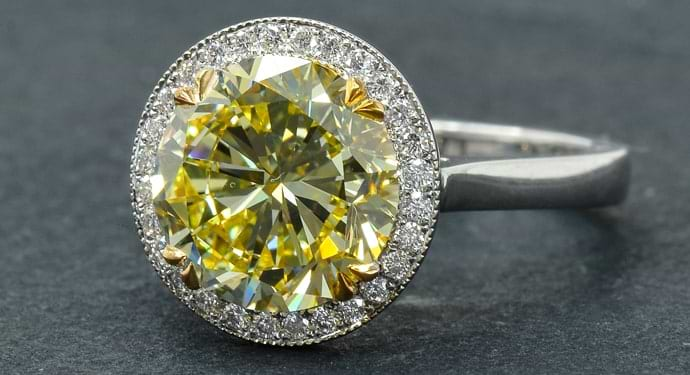
Round yellow diamond from Leibish
Cost of Round Diamonds
These multi-faceted diamonds are certainly stunning, which is why they account for 75% of all diamond sales. However, this beauty, brilliance, and popularity come at a cost. Round diamonds are typically 25-35% more expensive than diamonds of other shapes, otherwise known as fancy shapes. An advantage that round diamonds have, despite, their higher prices, is that they can be placed in practically any setting and are more durable than some other shapes like the princess and emerald shapes. Solitaire settings are often chosen for round brilliants because the sparkle of this shape is more than enough on its own. Other common settings include the halo setting, the side-stone setting, and three stone settings. Round diamonds do not have sharp edges and therefore do not get knocked around as much and don’t have the risk of getting chipped at the corners.
Diamonds are all cut and polished from their original rough form. When it comes to creating round diamonds, much of the rough stone is discarded. This is partly why round diamonds tend to cost so much. It is most definitely something to bear in mind while enjoying the brilliance of a brilliant round. Its shape is the product of a lengthy and delicate process that demands incredible skill, experience, and patience.
Additional Info
The Round Brilliant is the standard shape for diamonds. This form accounts for more than 75% of the diamonds sold today.
The modern round brilliant consists of 58 facets; 33 on the crown (the top half above the girdle) and 25 on the pavilion (the lower half below the girdle).

The Round belongs to the Round-Edge Fancies cut type. It is cut with a perfectly symmetrical faceted arrangement. The Round is cut in a way that allows the light to reflect through the stone causing a magnificent brilliant effect. As a result, it is the most popular shape used with colorless diamonds. Not many Fancy Colored Diamonds are cut in this shape since it is more difficult for the cutter to maximize the color intensity of the stone, therefore their price will usually be more expensive than other shapes.
Below you can view a gallery of different Round shape diamonds in the many styles they appear:
Among the world's most famous diamonds you can find the following Round diamonds:
The Hanckok Red, a 0.95ct fancy Purplish Red, The De-Young Red, a 5.03ct Brownish Red and the Pearson Colorless diamond.
During the years, different Round diamond were sold for record prices in auctions
• In 1987, The Hancock Red, a 0.95ct Fancy Purplish Red was sold for 926,000$ / Per carat and for many years was the most expensive price paid per carat.
• On Nov 09, a 3.17ct Round Fancy Intense Blue was sold for $796,178 / Per carat and became the " Highest price per carat for an intense blue."
Learn more about other common Diamond shapes:
 |
 |
 |
 |
 |
 |
 |
 |
 |
